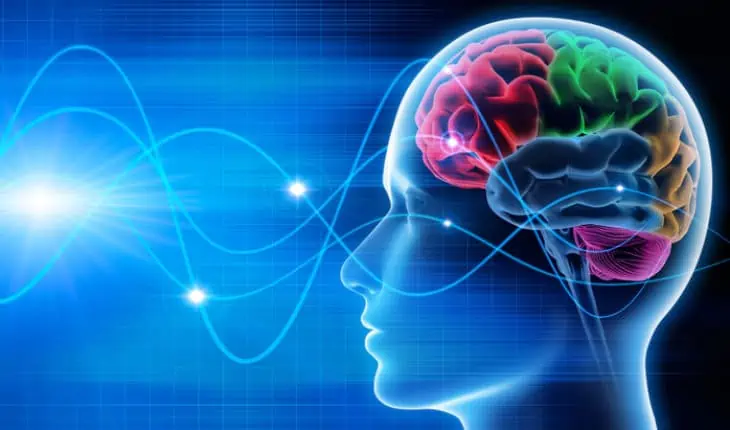Synchronising brain waves key to how and why we pay attention: New findings from researchers at the University of Melbourne and the German Primate Centre have revealed how interactions between electrical waves within the brain may be vital to information processing in the brain.

An informal diagram of the brain showing the high-gamma dorsal pathway (beginning at point MT/LIP) intersecting with the gamma ventral pathway (beginning at point V4) at point PFC. Researchers found that coupling lower frequencies of oscillations with higher ones allows fine-tuning of the brain and is thus the basis for higher cognitive functions, such as selective attention.
Electrical waves – or oscillations of neural activity, traditionally recorded to help diagnose epilepsy and to localise tumours, are normally produced by the combined and synchronous activity of many hundreds or thousands of neurons, but what these waves actually do in the brain has largely remained a mystery.
“We found that studying simultaneously how single nerve cells and groups of nerve cells in the monkey brain respond to visual stimuli in a behavioural task could give insights into the fundamental function of these waves,” said Professor Trichur Vidyasagar from the Department of Optometry and Vision Sciences at the University of Melbourne.
Published in Trends in Neurosciences, Professor Vidyasagar and his colleagues from the German Primate Centre, Dr Moein Esghaei and Professor Stefan Treue, have put forward two new concepts about brain function. One suggests that which precise pair of frequencies are coupled, and what effect attention has on it, depends on the brain area and its function. The other describes a mechanism for how attention helps to select what is important by tuning in to the relevant set of frequencies.
“This knowledge can help in elucidating the basic pathology in many neurological conditions. In fact, there are already indications that abnormal neural oscillations may be associated, even causally, with some disorders, such as schizophrenia, epilepsy, dyslexia, ADHD, autism and depression,” Professor Vidyasagar said.
The research team arrived at their findings through recordings of neural activity from different brain regions in primates. These parts of the brain were chosen for their involvement in visual perception and attention.
Dr Moein Esghaei said “coupling lower frequencies of oscillations with higher ones allows fine-tuning the brain and forms the basis for higher cognitive functions, such as selective attention”.
“Information arriving at different frequencies from different brain regions may help a target area to select the appropriate input depending upon what one needs to pay attention to,” said Dr Esghaei.
Professor Trichur Vidyasagar added: “For example, when you are driving on a busy highway and approaching a major hub, you will be shifting your gaze from watching the fast-approaching cars in an adjacent lane in the side-mirror and reading the signs above the different lanes in front of you. In such a critical situation, the brain’s executive centre can attend to a sensory input by simply tuning in to its respective frequency”.
“The attention network, by thus selecting different types of information as required, helps the brain to focus on what’s important among the barrage of information constantly flooding our senses,” Professor Vidyasagar said.
The research team now hopes not only to continue to study fundamental functions of the brain waves but also apply this knowledge to how they relate to various neurological conditions.
- World-first breakthrough for bowel cancer immunotherapy - 24th October 2025
- The future of sepsis research - 24th October 2025
- Unpaid carers working longer hours - 24th October 2025







